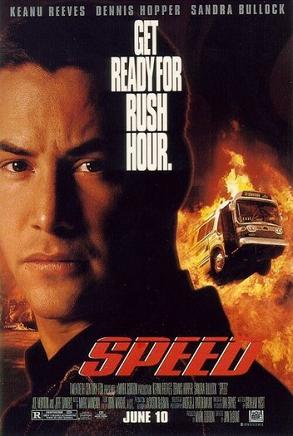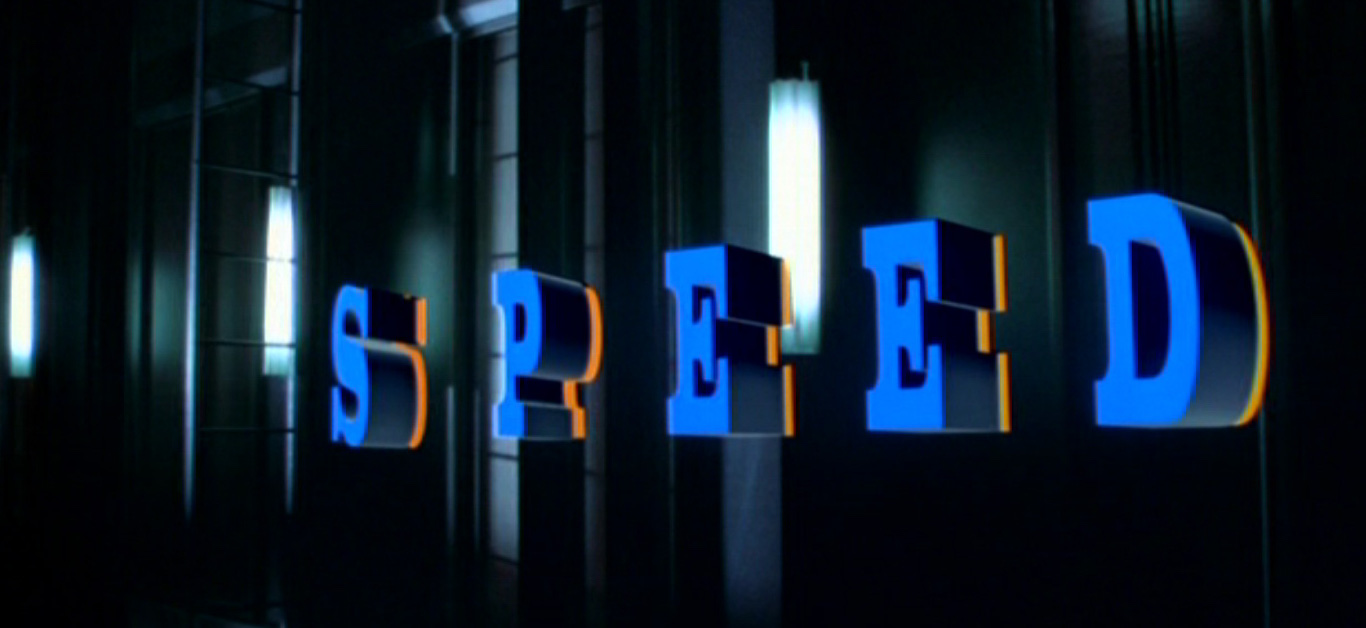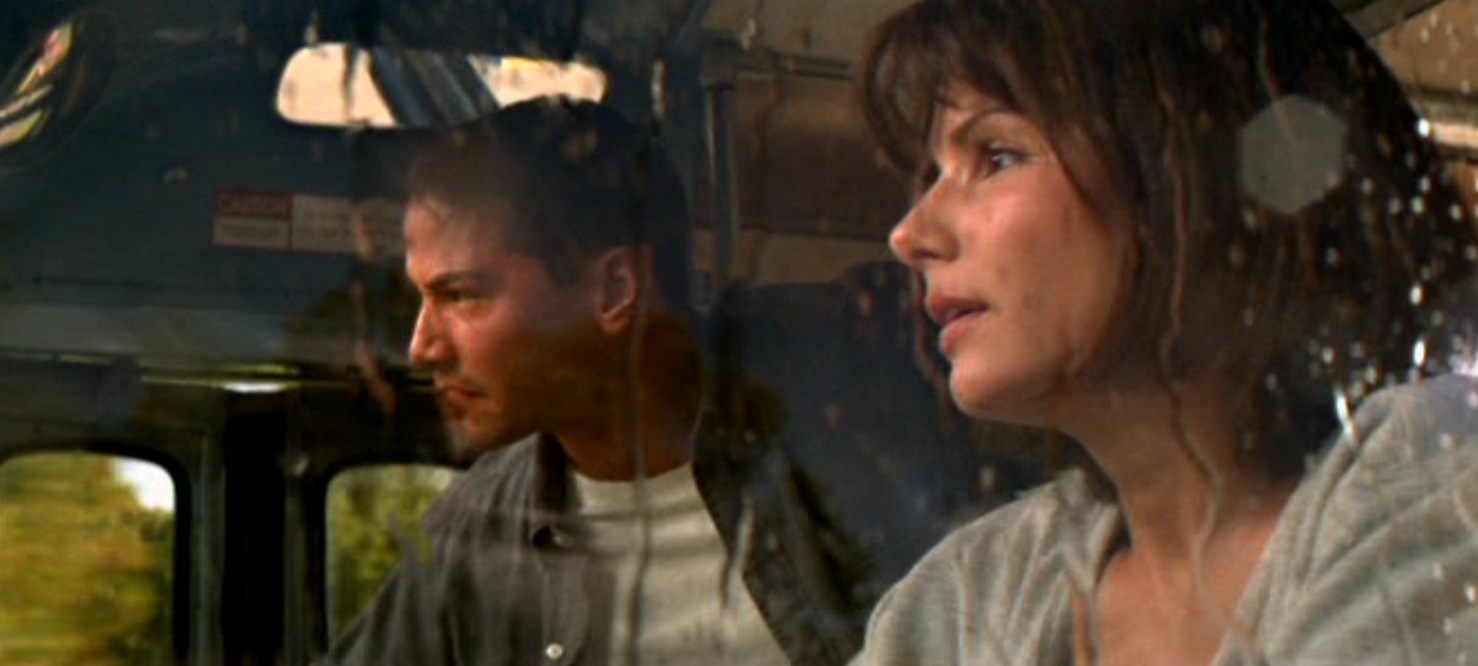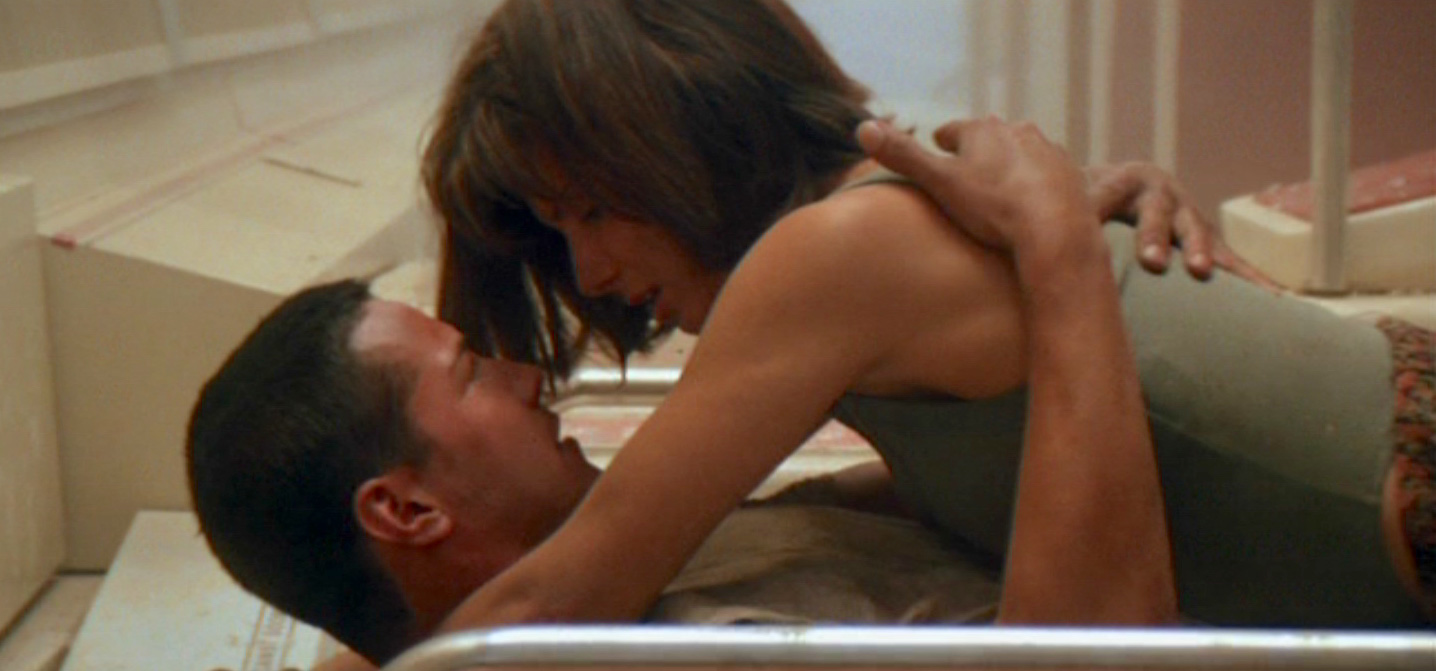by Lynn Lee
 When Speed was first released a quarter century(!) ago, the premise seemed ridiculous: Bomb on bus is triggered to go off if the speed ever drops below 50 mph. A bus in Los Angeles, no less. At rush hour! (Actually, it’s always rush hour in L.A., then as now, which only reinforces the preposterousness of the scenario.) Nevertheless, Speed managed to suspend viewers’ disbelief – and their breaths – with a combo of taut white-knuckle thrills that didn’t require elaborate special effects and light humor that relieved but didn’t distract from the constant tension.
When Speed was first released a quarter century(!) ago, the premise seemed ridiculous: Bomb on bus is triggered to go off if the speed ever drops below 50 mph. A bus in Los Angeles, no less. At rush hour! (Actually, it’s always rush hour in L.A., then as now, which only reinforces the preposterousness of the scenario.) Nevertheless, Speed managed to suspend viewers’ disbelief – and their breaths – with a combo of taut white-knuckle thrills that didn’t require elaborate special effects and light humor that relieved but didn’t distract from the constant tension.
A major hit both critically and commercially, it went on to win two Oscars (for sound mixing and sound editing) and elevate the then up-and-coming Keanu Reeves to full movie star status. Now that Keanu seems to be having another “moment” in his long and eclectic career, it feels like an especially opportune time to revisit the movie that vaulted him on to Hollywood’s A list.
How does it hold up?

Overall, pretty well!
Although certain aspects feel dated (the opening credits and overly aggressive score, both of which scream “’90s action movie!”; some of the racial dynamics; the complete absence of cell phones and the prominent role of a VHS tape), Speed delivers the same thrills and laughs it did 25 years ago, and still rides breezily past all the improbabilities inherent in the setup. You know an action movie’s still got it when you remember what’s coming and tense up anyway: the efforts to extract the passengers from a precariously poised elevator in the movie’s opening set piece; the upended baby carriage that turns out to be filled with cans; and of course, that leap of faith over a 50-foot gap in the freeway. Through it all the camera shifts nimbly between tight close-ups, accentuating the claustrophobia of what’s essentially a series of hostage situations, and long shots of the vehicles hurtling along in a race with no clear finishing line. I still think the third act (on the subway) is overkill and the ending silly; but up through the conclusion of the bus portion, it’s firing on all cylinders.
What really stood out to me this time around, though, is the sharpness of the casting and chemistry between the actors. Before Speed, few would have envisioned Keanu Reeves as an action star, Point Break notwithstanding, yet he’s wholly credible and compelling as LAPD SWAT officer Jack Traven. Part of it is that the character is adapted to highlight the actor’s unusual brand of charisma – a stillness and repose, sometimes criticized as woodenness, or what I call the Keanu Zen. While Jack’s character as written suggests a standard Hollywood brash-bordering-on-reckless maverick cop, Keanu imbues him with a contrasting quality of centered calm, even gentleness at times, that makes you believe in his ability to wrangle a bus full of panicky passengers. The star apparently wanted the cockier aspects of the character to be toned down and for Jack to be more polite and serious – and it shows. It’s worth noting that although Stephen Baldwin was apparently the first choice to play Jack (he declined), and Tom Cruise, Wesley Snipes, Woody Harrelson, and even Tom Hanks(?!) were also considered for the role, director Jan de Bont ultimately picked Keanu because the actor was “vulnerable on the screen,” and while “not threatening to men because he’s not that bulky,” he looked “great to women.”
And how.

Of course, no one brought out that latent vulnerability more effectively than Sandra Bullock as Annie, the perky, plucky passenger who takes over the wheel when the bus driver is accidentally shot. Speed was just as much a star-making vehicle for the then largely unknown Bullock as it was for Reeves, and it’s easy to see why on rewatch. Given a character with virtually no back story and little to do other than drive the bus, she’s an unexpected delight who all but steals the show, from her deft evasion of an irritating fellow passenger (“There’s gum on my seat”) to her quiet sparks with Jack and her ability to make even the corniest one-liners charming. Unfortunately this makes the third act, in which she’s forced into the much less interesting role of damsel-in-distress, all the more disappointing.
The rest of the cast provides solid backup, with Dennis Hopper less scenery-chewing than I remembered (although he does clearly savor the villain’s more wackadoodle pronouncements), Glenn Plummer still a hoot as the passing driver whose car Jack commandeers, and Jeff Daniels and Joe Morton coolly steady as Jack’s partner and superior officer, respectively. Perhaps most entertaining are the bus passengers, a demographically diverse group who, despite being mostly unnamed, look like a realistic cross-section of L.A. and provide an engaging mix of comic relief, freakouts, and eventual teamwork to support Jack’s heroic efforts. Joss Whedon reportedly did an uncredited “polishing” of the movie’s script, which manifests most obviously in these group dynamics.
In the end, though, Speed is – and I think will be best remembered as – the Keanu & Sandy show. It’s the first time these two showed their full potential as leads, and still carries the feeling of a double discovery.

Did you see Speed when it was first released, or have you seen it recently?